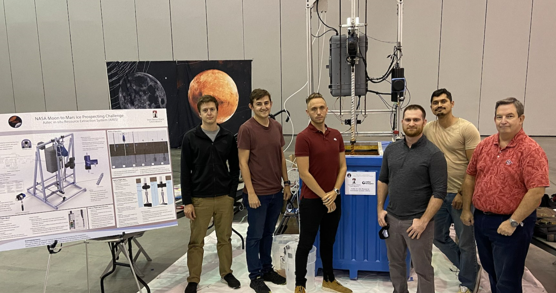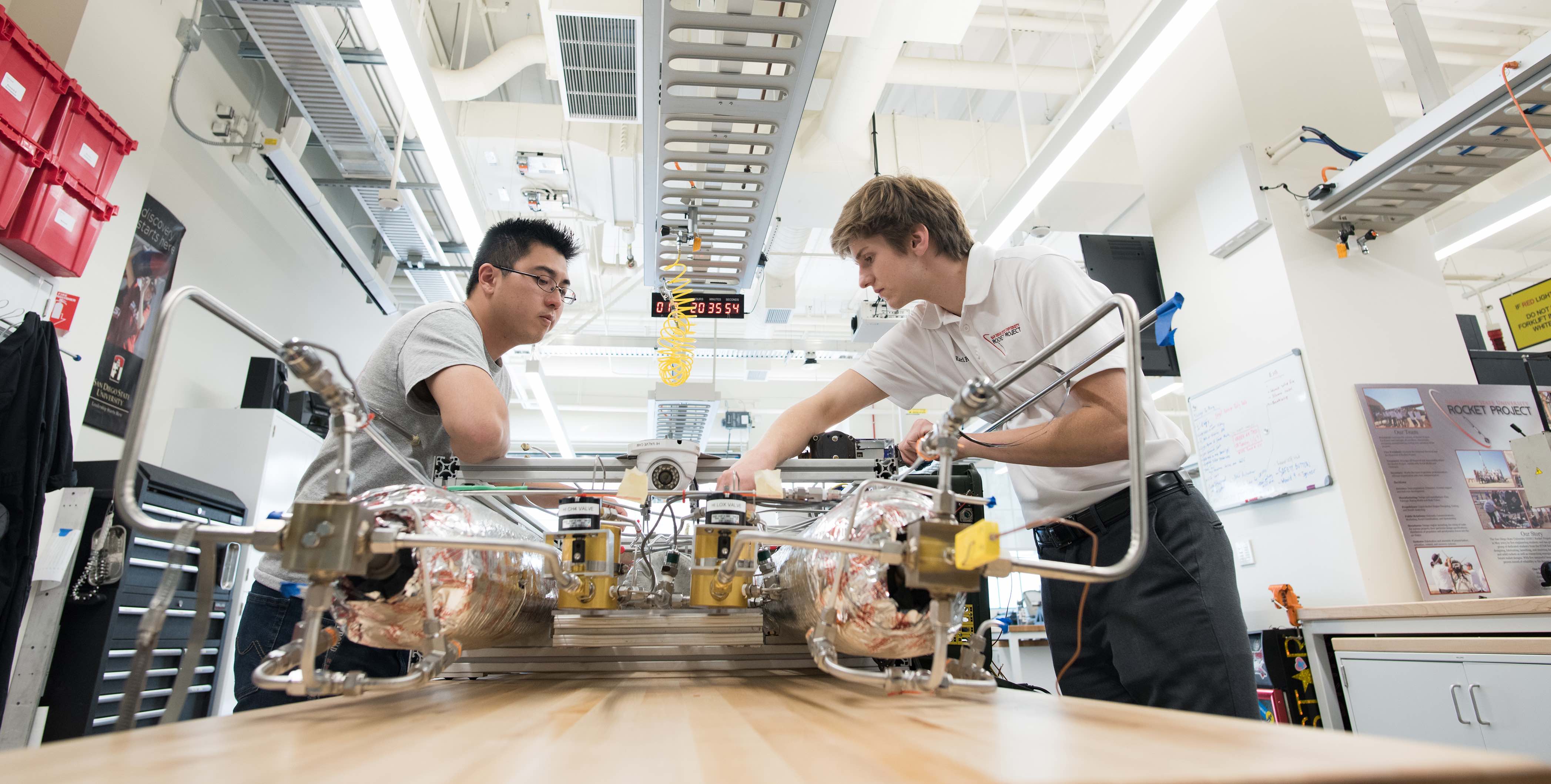SDSU Engineering Students Rise to National Finalists In NASA Moon to Mars Competition

L-R: Team ARES representatives: David Bunsen, Matthew Gonzalez, Brandon Mosburg, Alan Clemenson, Jonathan Maravilla, Dr. Scott Shaffar
An interdepartmental team of five mechanical engineering and four electrical engineering students collaborated in their Senior Design project landing them a prestigious spot, even in their first ever entry, as one of just nine national university finalists in NASA’s competitive Moon to Mars Ice and Prospecting Challenge.
NASA’s challenge required each team to develop and demonstrate a working tool that could bore through dense layers of soil on Mars and the Moon to extract ice hidden below the celestial surfaces and convert it to usable water on future space missions.
The SDSU engineering team stepped up to meet the NASA challenge naming themselves ARES, based on their innovative interplanetary tool called the Aztec in-situ Resource Extraction System.
Despite multiple competition delays, studying remotely due to COVID-19 restrictions, working full time jobs, and even graduating in Spring 2021, the now alumni ARES team had continued to dedicate themselves to the development of their new interstellar water extracting tool. The team eventually competed in the national final competition in Virginia - against competitors such as MIT and Northeastern - in September 2021.
At the time, Alan Clemenson ('21) was an electrical engineering ARES team lead. He had since graduated and moved to Washington and began a full-time job. But the team still decided to pivot, collaborating remotely via Zoom to take it over the finish line, saying, “We were able to take control of our automated drill through Zoom’s remote control function, which meant we were able to run a pseudo-test on it.”
Team ARES’s project ultimately caught NASA’s attention, likely because of the interdisciplinary use of radiant heating, an auger-style drill, and an extraction system that utilizes a specialized pump to bring the melted ice to the surface. “It’s actually quite an elaborate set of electronics to detect what kind of surface we’re going through,” explains Dr. Scott Shaffar, professor of Mechanical Engineering’s Senior Design class, who collaborated with his Electrical and Computer Engineering counterpart Dr. Barry Dorr for the unique senior design experience. “Creating these joint projects has been a fairly new venture to develop and foster connections across departments. It doesn’t make sense for only one discipline to do a project, because that isn’t the way the industry works” said Shaffer.
With $10,000 in funding from NASA, generous support from the Student Support Grant and the College of Engineering Dean’s Office, and support from Collins Aerospace, the team was equipped to continue their post-graduate work on their drill to prepare for the final in-person competition.
NASA's chief technologist Doug Terrier explained that the competition exists for all participating teams to learn from each other, saying “The ability to access water is crucial to future human space exploration. Equally important is the willingness for NASA to continually seek fresh approaches.”
The final competition proved to be successful for Team ARES. The team secured sufficient funding for five team members and one of their advisors to travel to the competition. As a first-year team, ARES successfully extracted water and also generated the second cleanest water output. Team ARES also, along with the other finalists, cumulatively extracted more water this year than in all previous years combined.
Clemenson, a veteran and non-traditional student, said the competition was incredibly impactful and set him up for professional success. “It was life molding for me. It showed me I’m not just settled in my ways or just an older student. I don’t need to think pragmatically about my engineering career as just providing for my family - I can still get excited about my job and have passion for it.”
To learn more about the 2021 Senior Design Project or this year’s engineering projects, click here.

